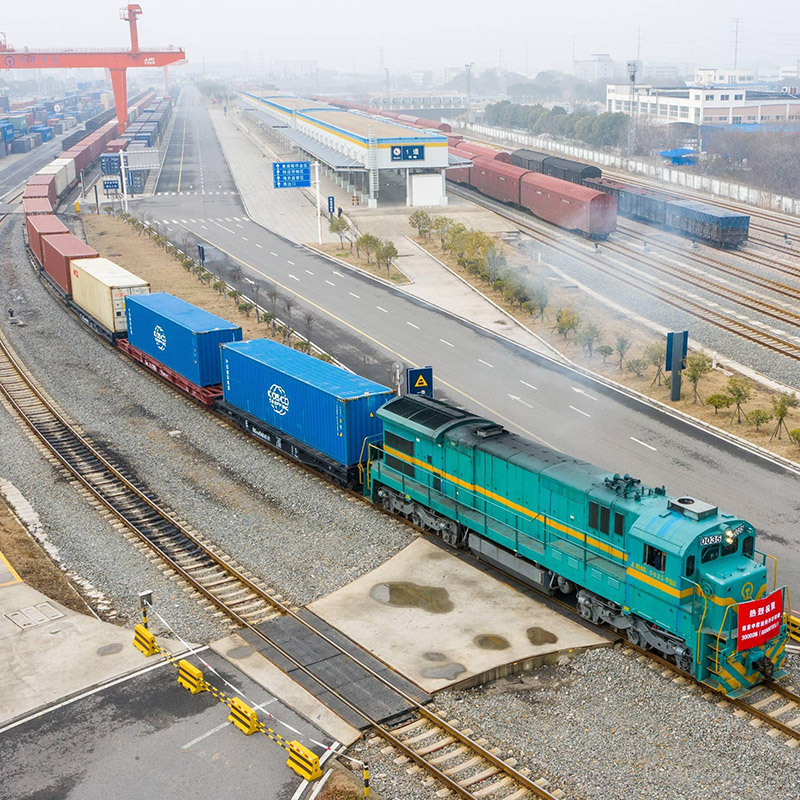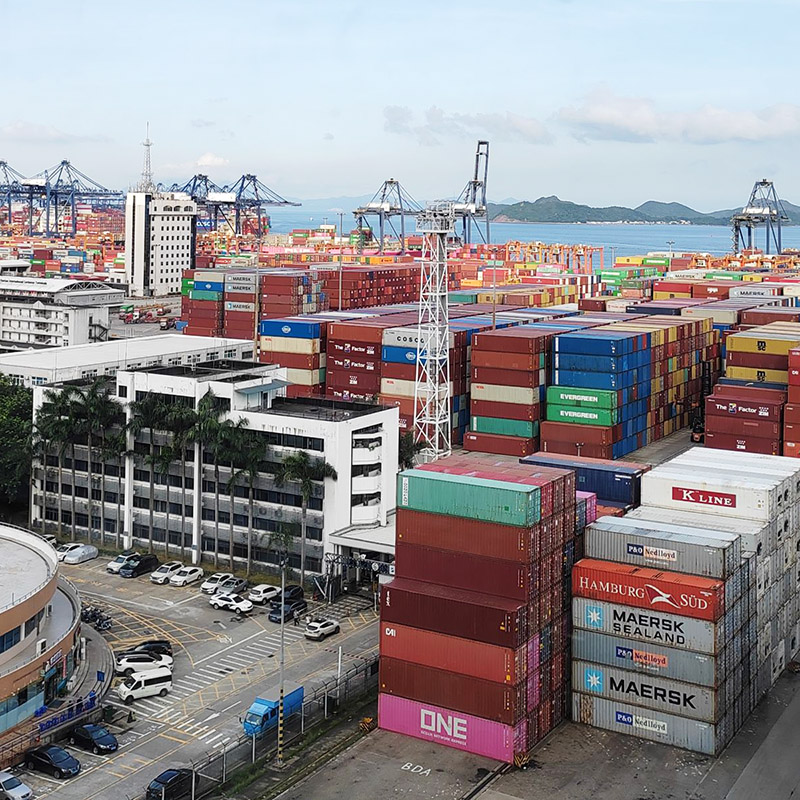

Views: 0 Author: Site Editor Publish Time: 2025-01-20 Origin: Site








As the global logistics landscape evolves, businesses are continuously exploring ways to optimize their supply chains and reduce transportation costs. In 2025, the debate between railway freight and road transport continues to be a central issue for logistics managers, businesses, and policymakers. Both methods have their own unique advantages and challenges, making it crucial to understand the efficiency of each mode when it comes to different types of cargo, distances, and overall business needs.
This article will dive deep into the key factors that influence the efficiency of railway freight and road transport, providing a comparative analysis that will help businesses make informed decisions. With a focus on factors such as cost, environmental impact, speed, and reliability, we’ll examine how these transportation methods perform in 2025, the year when sustainability, technology, and global trade are expected to shape the future of logistics.
The logistics industry is currently experiencing a paradigm shift. As industries demand more sustainable transportation options, railway freight has emerged as a key player in the fight against climate change. Railway freight provides a more environmentally friendly option than road transport, especially over long distances. Trains can carry significantly larger volumes of goods compared to trucks, making them ideal for transporting heavy and bulk commodities.
YOUDA Logistics, a leader in the transportation industry, offers reliable and cost-effective railway freight services between Asia and Europe. Their solutions provide businesses with the advantage of fast, door-to-door delivery and competitive rates that help secure supply chains. Whether it’s a small shipment, a few pallets, or multiple full loads, railway freight offers flexibility and scalability that road transport sometimes lacks. With growing emphasis on sustainability and economic efficiency, railway freight is becoming an increasingly attractive option for businesses that want to streamline their operations.
Cost-Effectiveness: One of the major advantages of railway freight is its cost efficiency, particularly for large, bulk shipments over long distances. While initial infrastructure costs are high, railway freight offers much lower costs per ton-mile compared to road transport. This is particularly important for industries that move heavy goods or materials, such as manufacturing and mining.
Environmental Sustainability: Trains have a significantly lower carbon footprint compared to trucks. Railway freight produces far fewer CO2 emissions per ton-mile, making it an environmentally friendly alternative to road transport. In 2025, when climate change policies and carbon footprint regulations are tightening, many companies will increasingly turn to railway freight to meet their sustainability goals.
Reliability and Timeliness: With dedicated tracks and fewer weather-related interruptions, railway freight tends to be more reliable than road transport, which can be subject to traffic delays, road conditions, and other unpredictable factors. Services like YOUDA Logistics' railway freight service offer fast, reliable, and door-to-door dispatch services to ensure that shipments reach their destination on time.
High Capacity and Scalability: Railway freight is especially beneficial for transporting large quantities of goods. Trains can carry heavier loads and more items than trucks, reducing the need for multiple trips. This capacity makes it ideal for bulk commodities such as coal, steel, or agricultural products.
Infrastructure Limitations: One of the most significant limitations of railway freight is the reliance on the existing rail network. Many regions, particularly rural areas, lack the necessary infrastructure to support railway freight effectively. In some cases, businesses may need to rely on a combination of rail and road transport to ensure that their goods are delivered on time and in the right condition.
Limited Flexibility: Unlike road transport, railway freight often requires goods to be transported to or from rail terminals, which may not always be located near the point of origin or destination. This limits its flexibility for certain types of shipments, especially time-sensitive or smaller goods.
Customs and Border Control: For international shipments, customs processes can be more complex for railway freight compared to road transport. Freight moving between countries, especially in regions like Asia and Europe, must pass through various customs and border checks, which can introduce delays.

While railway freight is gaining traction, road transport remains the dominant mode of freight transportation, especially for shorter distances, last-mile delivery, and smaller loads. Road transport offers unrivaled flexibility, with the ability to reach virtually any location, regardless of infrastructure.
In 2025, road transport remains essential for businesses that require door-to-door delivery and fast, adaptable solutions. As consumer demand for quicker delivery times continues to rise, road transport plays a critical role in meeting the needs of industries like e-commerce, retail, and manufacturing.
Flexibility and Accessibility: Road transport offers unparalleled flexibility. Trucks can travel to virtually any location, providing direct, door-to-door service. This is especially important for businesses with a diverse range of destinations or those that need to deliver goods quickly to various locations.
Faster for Short Distances: For shorter distances, road transport tends to be faster than railway freight. Trucks do not require the same level of coordination as trains and can often deliver goods more quickly. For deliveries within cities or regions, road transport remains the most efficient solution.
Smaller Shipments and Last-Mile Delivery: Road transport is ideal for smaller shipments, which may not be suitable for railway freight due to the scale of operation. It also plays a crucial role in last-mile delivery, where goods need to be moved from rail terminals or ports to the final customer.
Cost of Entry: Starting a road transport operation requires significantly less initial investment compared to setting up a railway freight service. Trucks are more readily available, and the road network is already established in most regions. This makes road transport more accessible for small and medium-sized businesses.
Traffic Congestion: As cities continue to grow, road congestion becomes an increasing problem. Delays due to traffic, road closures, or accidents can significantly slow down shipments, impacting delivery timelines and increasing costs.
Environmental Impact: Road transport is less environmentally friendly than railway freight, with trucks emitting more carbon dioxide and other pollutants per ton-mile. In an era of increasing environmental regulations and sustainability goals, road transport may face more restrictions, particularly in urban areas.
High Fuel Costs: The volatility of fuel prices can make road transport more expensive than railway freight. Companies dependent on road transport for their supply chains may face higher costs during periods of fuel price instability.
Driver Shortages: The trucking industry faces a growing shortage of qualified drivers, a problem expected to continue into 2025. This shortage can lead to delays, higher wages for drivers, and increased costs for businesses relying on road transport.

| Factor | Railway Freight | Road Transport |
|---|---|---|
| Cost Efficiency | Lower cost per ton-mile, ideal for bulk and heavy goods | Generally higher costs for long-distance freight |
| Environmental Impact | Much lower CO2 emissions per ton-mile | Higher CO2 emissions due to reliance on diesel trucks |
| Speed and Flexibility | Slower, but reliable and efficient for long-distance | Faster for short distances and last-mile delivery |
| Capacity | Higher capacity for large, bulk shipments | Lower capacity, best for smaller or more frequent loads |
| Infrastructure Needs | Requires a well-developed rail network | Can travel on any road, more accessible |
| Applications | Bulk commodities, long-distance transport | E-commerce, last-mile delivery, smaller shipments |
The primary advantage of railway freight over road transport is its cost efficiency for long-distance, bulk shipments. Trains can carry much larger quantities of goods over long distances at a significantly lower cost per ton-mile than trucks.
Yes, railway freight is far more environmentally friendly than road transport. Trains produce fewer carbon emissions per ton-mile compared to trucks, making railway freight an ideal solution for businesses looking to reduce their carbon footprint.
Railway freight is ideal for bulk, heavy, or oversized goods but may not be the best option for smaller or more time-sensitive shipments. It also requires specialized terminals and infrastructure for certain types of cargo.
For long-distance, bulk shipments, railway freight is generally more cost-effective. However, for shorter distances and smaller shipments, road transport may offer a more competitive price due to its flexibility and lower entry costs.
Both railway freight and road transport offer distinct advantages depending on the business's needs. Railway freight is ideal for large
-scale, long-distance, and environmentally-conscious operations, while road transport remains essential for flexibility, last-mile delivery, and faster transit over short distances.
As we move into 2025, businesses will need to carefully assess their specific logistics requirements to choose the most efficient mode of transport. Many companies are opting for railway freight as a more sustainable and cost-effective alternative, especially for international shipments across vast distances. However, road transport will continue to play a critical role in day-to-day operations, especially for smaller shipments and last-mile delivery.
Ultimately, the decision between railway freight and road transport will depend on factors like cost, speed, environmental concerns, and the specific logistics needs of the business. By making informed decisions, businesses can optimize their supply chains for greater efficiency in 2025 and beyond.